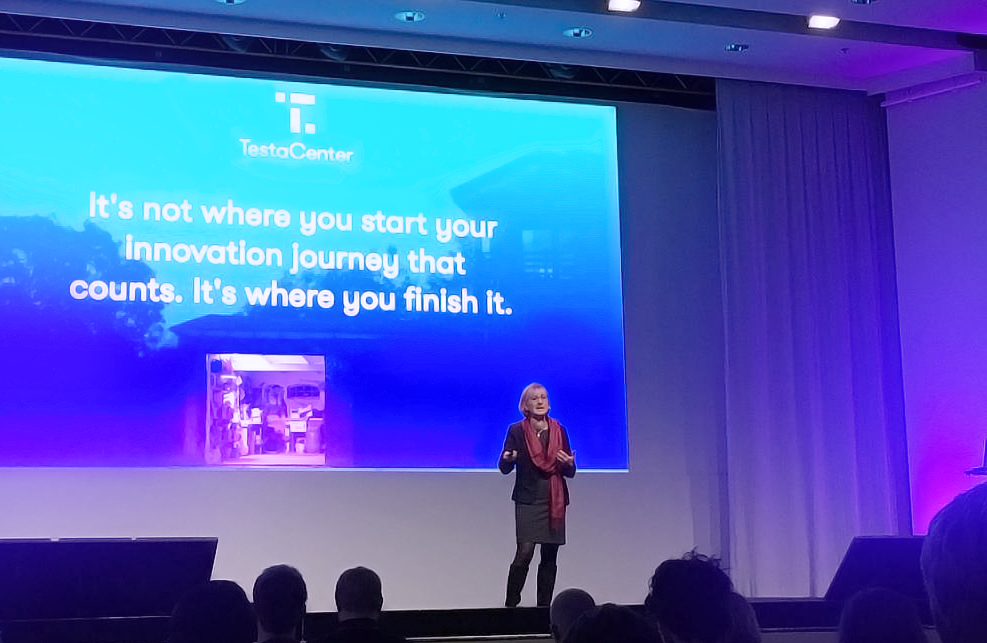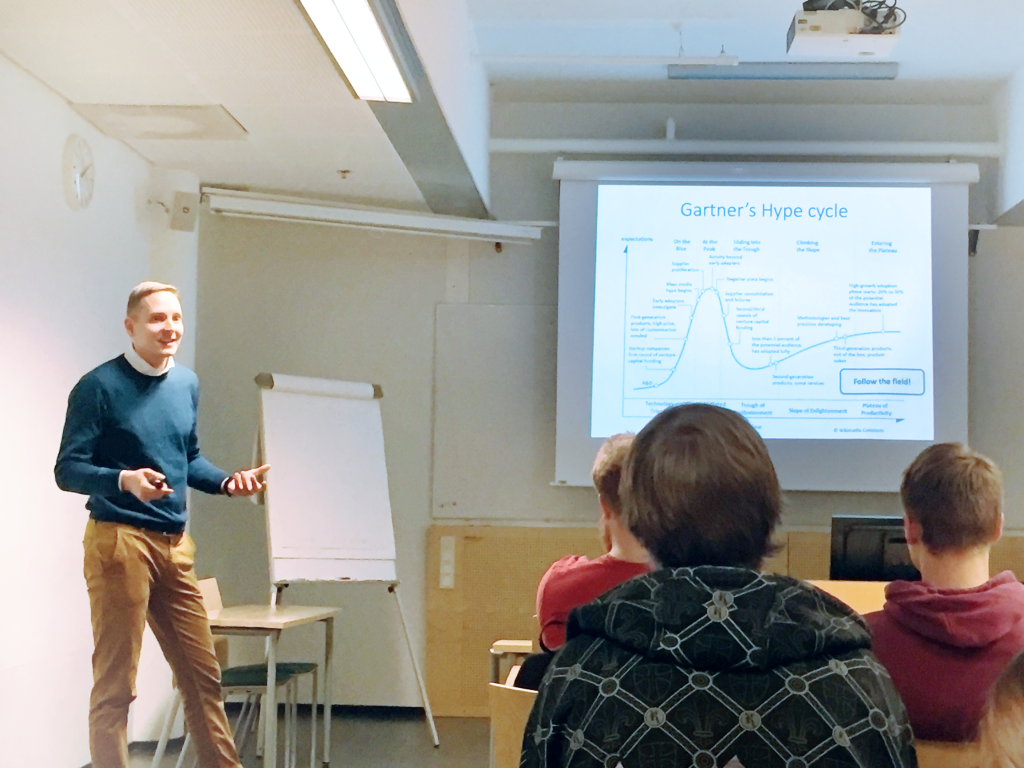
Photo by Johanna Puutio.
If there is one word in the health science sector that is in everyone’s mouth, it must be innovation. The use of this word is not always correct, and its meaning seems to get lost. To learn about this very popular topic, we had a lesson in the Integrative Health Biosciences course imparted by Otto Kari, vice-president of the Finnish Red Cross and with expertise in both pharmacy and R&D management and research administration.
First, let’s talk about terminology. Invention and innovation are often confused with each other. According to Otto, invention is the creation of something new, whether it may be useful or not. Innovation is the act and outcome of a process that makes an invention useful. Innovation is considered to be a driver of economic growth. It has a destructive component. When introducing new products and processes, the old ones can become obsolete when their production drops and jobs are lost. Adaptation to new technologies can be difficult and expensive. Nevertheless, new jobs, production lines and markets are created. Ideally, by definition, innovation means an improvement of quality and productivity.
Another point he made was, that with the birth of internet and social media, communication is a lot faster and more effective, and the time it takes for new products to gain users is now a lot shorter. To put it into perspective, airlines took 68 years to gain 50 million users, while the telephone took 50, cell phones only 12 and the app Pokémon Go only 19 days. The fast pace of appearance of new products and services and the loss of popularity makes innovation more relevant than ever.

Photo by Pia Siljander.
Otto also explained that there is a normal distribution of the diffusion and adoption of new technologies. The crucial point is the so called “crossing the chasm”, the point when an early majority that is not necessarily fascinated by technology adopt a new product or service. It is from this point onward where profits can be made. It is not easy to predict what people will do or how well a new technology will be accepted, so the only thing that can be done is to ask people what they think will happen in specific fields.
He told us that another important aspect to take into account is the hype. Hype is essential to a startup boom. Startups are not the most reliable business model, but it is the most popular one and there is hype around them. With new technologies there are hype cycles. They start with a peak of inflated expectations; a lot is expected of new technologies as the people who understand technology are enthusiastic about them. However, this does not mean that the technology has been adopted by the market or that it is making profit. After some time, the hype disappears, but new products improving the original models are developed. The improvement on the features of this new technology makes the market adopt it, not because of the hype, but because it works.
Everyone is looking for “the unicorn”, a disruptive innovation that will revolutionize the market and will make all the old ones obsolete.
Companies need innovations to keep being relevant. The fast evolution of the market requires continuous generation of new products or improvements in the old ones. This make investors be interested in new emerging, promising technologies. Everyone is looking for “the unicorn”, a disruptive innovation that will revolutionize the market and will make all the old ones obsolete. Being the first to exploit a disruptive innovation means getting a huge amount of profits out of it. An example of disruptive innovation given in the class is touch screens making traditional keyboards in mobile phones obsolete. In the health science field, a very clear disruptive innovation is the CRISPR/Cas technology that has revolutionized genome editing, making tools such as TALENS or Zinc-fingers almost completely obsolete. Years and years of research and gain of expertise can be destroyed by a new disruptive technology that changes the whole market.
In the past, I have taken a course dedicated to the biotechnology industry (biotechnology, from inventions to commercialization – MMB, University of Helsinki), where innovation plays a crucial role, and I had also attended lectures on it on a different course at my home university (gestion de bioempresas, aspectos legales y éticos – ETSEA, UDL). What these courses and the lesson we had in IHB have in common is the highlighting of how crucial it is to be innovative in the current market. Only those companies who take innovation seriously will survive, and only the startups that manage to make some kind of breakthrough will be successful.
It is very important to understand what innovating is and how technological innovations work when applying for a job in a company or when trying to create a startup. A lot of people have very good ideas on a daily basis, but to really create a successful invention, these ideas have to be made a reality in the right way. To figure out what that right way is, one must know how the market works, how receptive it would be to your invention and how much time is needed for it to start generating profit. The more a student gets familiarized with how innovation works, the higher are the chances of landing a corporate job – or eventually creating a successful company themselves.
– Carlos Lapedriza, IHB student and LSE blogger

